

Rock Art Around Las Vegas -- New or Old: How Can You Tell?
Rock art is a precious resource. Please help protect and preserve these sites.
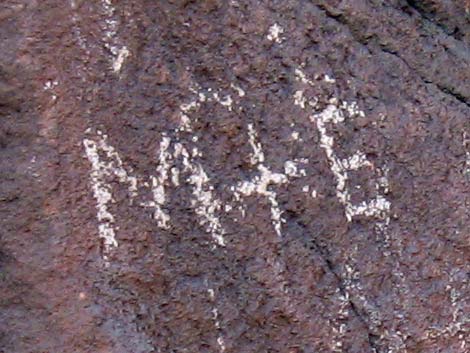 |
Usually is it easy to tell the difference between new and old rock art. Modern humans usually produce sloppy work scratched onto the surface rather than art carefully pecked into the stone. I would imagine that modern humans are impatient and don't realize the effort required to create rock art. Modern humans also often scrawl their name or initials onto the rock, and because Native Americans did not use the English alphabet, it obviously is not authentic. |
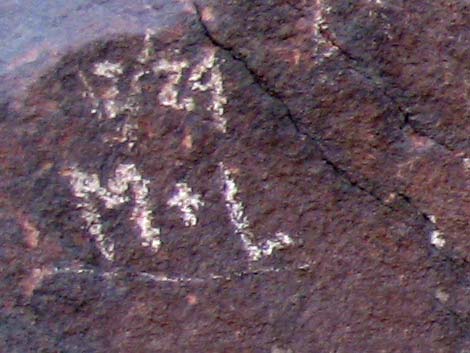 |
Modern humans also tend to put dates on their scribble, so the presence of dates helps identify modern etchings. |
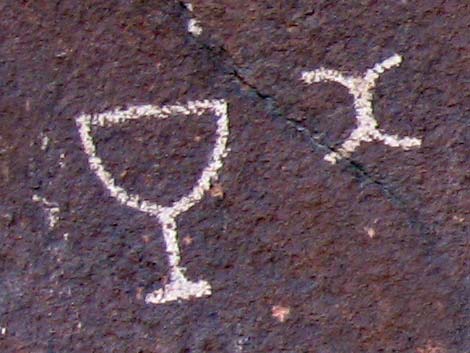 |
Sometimes modern humans do produce nice, finely etched lines, although this is quite uncommon. In these cases, a clue to recognizing modern etching is the subject matter. While modern etching sometimes include abstract art similar to native American rock art, often the symbols resemble modern items. In this case, the "X" is curious, but I doubt that native Americans used wine glasses. |
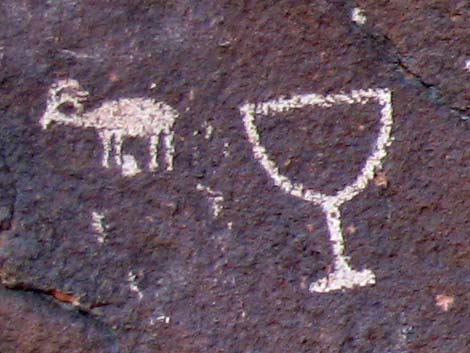 |
Rarely, modern humans do produce nice, finely etched lines using authentic subject matter; in this case, a bighorn sheep. Around southern Nevada, next to abstract art, bighorn sheep probably are the most common subject matter. In these cases, and in cases of similarly fine abstract art, the question of new vs. old becomes harder. It is possible that the clean, white artwork was done by native Americans near the time of the European invasion or even more recently than that. |
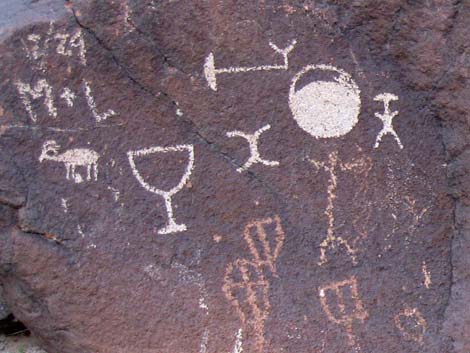 |
When the symbol and quality seem appropriate for authentic rock art, the best clue comes from nature itself. In this photo, notice the color difference between the upper and lower symbols. The upper symbols are clean white (including the date, initials, and symbols), while the lower symbols are dirty brown (perhaps a human form, otherwise all abstract symbols). The color of the boulder is white, and the brown is produced by a layer of dark material on the surface of the rock called rock varnish or desert varnish. In desert regions, desert varnish is the product of biological activity where microbes living on the surface of the rock facilitate the combination of wind-blown clay particles with manganese and iron in a complex process that has been figured out by scientists only recently. The varnish develops very slowly, taking perhaps 10,000 years to coat a rock. Using this information, we can tell that the white etchings are new, while the brown etchings are so old that varnish has already started to cover them up. |
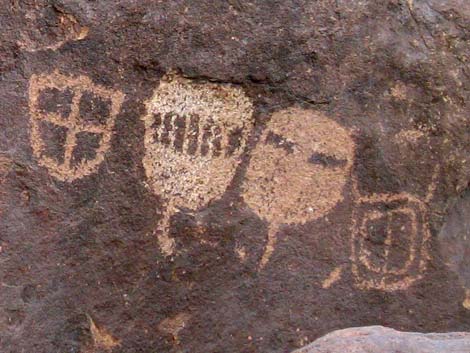 |
Using the degree of revarnishing as a guide, sometimes you can get a notion of relative age of authentic rock art. It appears as though three of the figures at left were carved at about the same time (same degree of revarnishing), while the fourth (second from left; arrow) was carved at some later time (less revarnishing). Humans have lived in the Las Vegas region for thousands of years, so it is entirely reasonable that some rock features are thousands of years newer than others. |
Happy Hiking! All distances, elevations, and other facts are approximate.
![]() ; Last updated 240323
; Last updated 240323
| Rock Art | Glossary | Copyright, Conditions, Disclaimer | Home |